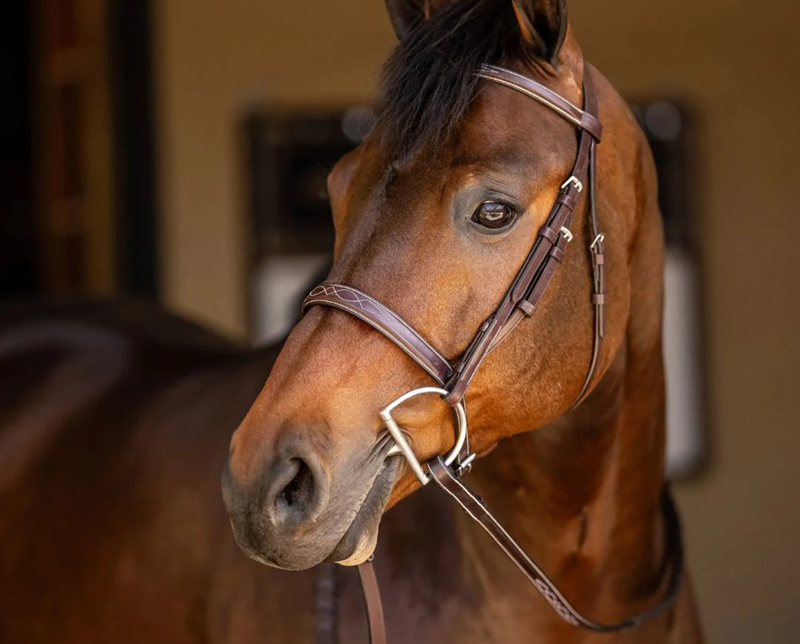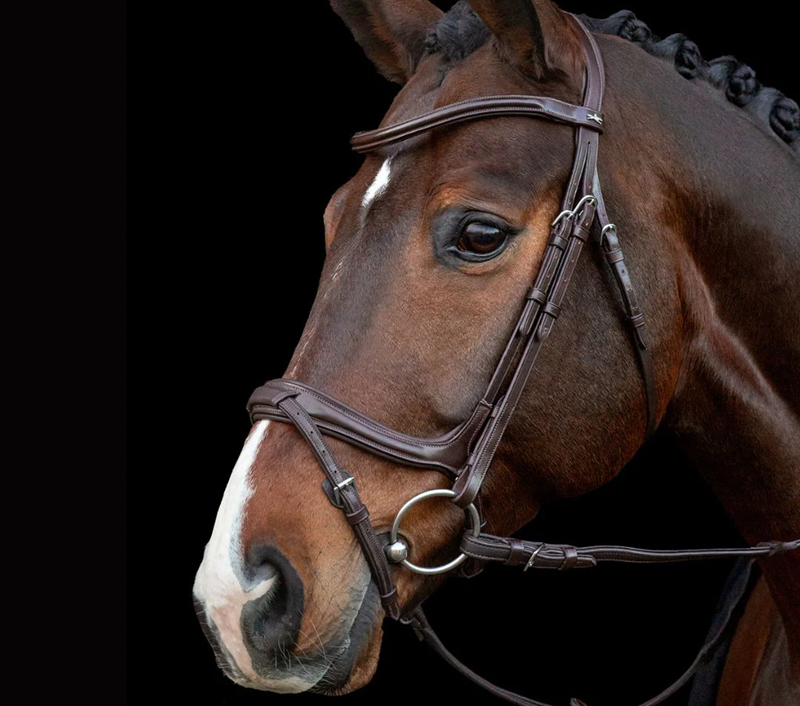If you watch a rider and their horse, you will notice there’s a special connection between them. But apart from this intangible, magical bond, there are some very important communication cues happening, too. The key piece of equipment that enables this efficient communication is the bridle. Today, we talk about the English bridle, so if you are a newcomer to the equestrian world and wondering which style is best for your horse, then let’s go through the basics.
What is a Bridle?
The bridle is an essential part of your horse’s tack and consists of a series of leather straps that sit on its head. The primary parts are the headpiece, bit, and reins. As it is one of the main sources of communication between the rider and the horse, it is vital that you select a high-quality English bridle that is suitable for your discipline and fits the horse properly.
Types of English Bridles
The Snaffle Bridle
The snaffle bridle is an essential tool for equestrians in English riding disciplines. It contains a simple headstall and a snaffle bit that applies direct pressure on the horse's mouth. These bridles are typically used in dressage at lower levels, show jumping, eventing, and everyday use. Their simple design makes them user-friendly and suitable for training young horses and riders.
Dressage Bridle
Marked by its cavesson noseband, the dressage bridle is designed for precision and delicate communication. More advanced dressage can make use of a double bridle, which employs two bits (a bradoon and a curb) and two sets of reins for even more subtle cues. The dressage bridle will generally have a wider and more padded noseband and may feature a flash attachment to help keep the horse's mouth closed.
Jumping/Hunter Bridle
These bridles tend to employ a flash or figure-eight noseband to provide additional stability during jumping. The design emphasizes balance between rider control and freedom of movement to provide for stretching over the jump while maintaining rider communication. They are more minimalist in comparison to dressage bridles, with simple, clean lines.
The Double Bridle
Used almost entirely at upper levels of dressage, the double bridle is made up of two bits: a bradoon (narrow snaffle) and a curb. It is not a bridle to be tried by novice riders, as it offers greater sensitivity through independent reins. The double bridle provides subtle control over the horse's frame and collection, which is essential for upper-level dressage movements.
The Figure Eight Bridle
Known for its distinctive crossed noseband, the figure eight prevents the horse from crossing its jaw and avoiding bit pressure. Employed largely in show jumping and eventing, this type of bridle holds the bit in place but allows the horse to breathe easily during intense effort.
The Drop Noseband Bridle
The drop noseband sits below the bit and helps keep the horse's mouth closed. It prevents evasion behaviours like opening the mouth to avoid bit pressure, so it is particularly useful for young or sensitive horses that are learning to accept the bit.
Selecting the Right Bridle
Consider Your Discipline
Each riding discipline has functional needs and conventional bridle forms. Dressage riders might need the precision of a double bridle for more advanced levels, while eventers might find a figure eight preferable for cross-country stability and breathing efficiency.
Assess Your Horse's Needs
Consider your horse's facial structure, sensitivity, and attitude. Horses with thick jowls are usually able to accommodate wider cheekpieces on bridle bits, whereas those that shy away from bit contact would benefit from specific nosebands. Fussy horses may require padded components for ease.
Assess Quality and Materials
Leather quality plays a significant role in durability and comfort. Full-grain leather offers durability and forms a stunning patina with proper care. Synthetic material provides weather protection and ease of maintenance but may not have the traditional appearance preferred in some show rings.
Proper Fitting Procedures
- Headpiece Placement: The headpiece should rest behind the ears comfortably without pinching. There should be ample room so that the ears of the horse can swing yet not so loose that the shifts during riding.
- Adjustment of Cheekpiece: Tighten the cheekpieces so that the bit is properly seated in the horse's mouth. For most snaffle bits, this means making one or two wrinkles at the corners of the mouth. Too high and the bit will cause discomfort; too low and the horse can evade the action of the bit.
- Noseband Positioning: The noseband should be approximately two fingers below the facial cheekbone. It should be tightened to perform its function (most commonly to keep the horse from opening its mouth to evade the bit) but should be loose enough to be comfortable—leave room for two fingers between the noseband and the jaw of the horse.
- Throatlatch Fitting: The throatlatch prevents the bridle from sliding off the horse's head. It should be loose enough so that the horse can flex at the poll without restriction—generally with enough space for a flat hand between the throatlatch and the horse's jaw.
Takeaway
The choice of horse bridles should be based on your riding discipline, the horse’s comfort and responsiveness, and your own competence. Regardless of your selection, fit and comfort for the animal are most important for successful communication with your equine partner.